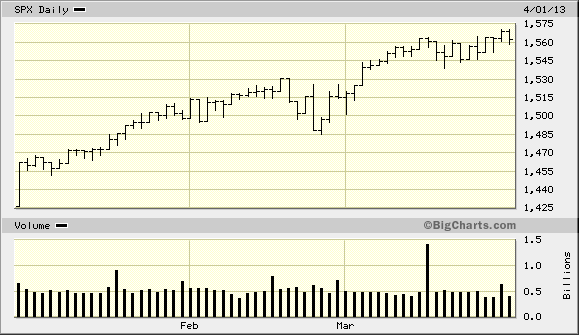At the start of every New Year we always
publish a Kress cycle “echo” forecast for the year ahead. For the benefit of
those unfamiliar with a Kress Cycle “echoes,” these stock market patterns are
based on four key yearly equity market rhythms. These rhythms tend to repeat
and have therefore been invaluable in providing a rough guideline or “road map”
for what to expect in the coming months.
What
exactly are Kress cycle echoes? Quoting at length from chapter 4 of the book on
Kress Cycles: “In
any given year, one or more of the Kress Cycles is dominant. Market moves are
determined by the actions of the cycles, whether the cycles are in the peaking
or the bottoming phase and it’s our task to ascertain which of the multiple
cycles are most dominant.
“In
2008 it was the simultaneous peak of the 12-year cycle and the bottoming 6-year
cycle which exerted a profound influence over the market. In 2009 the most
dominant cycle was the 10-year cycle, which peaked in the late September/early
October time frame. One of the things I’ve learned from Mr. Kress is that while
the peaks and troughs of the various yearly cycles are fixed in time, during
any given year one can use certain key cycles as “mirrors” or echoes if you
will, of the same cycle in a previous time frame. Those key cycles, according
to Mr. Kress, are the 6-year, 10-year, 30-year and 60-year cycles.
“With these four cycles we can look back at
the comparable time frame and make important observations about past market
patterns in relation to today’s market action.” [Pg. 83, Kress Cycles]
Let’s
start with a review of last year’s echo analysis. The Kress cycle echo for 2013
was based on the years 2006 (6-year rhythm), 2003 (10-year rhythm), 1983
(30-year rhythm) and 1953 (60-year rhythm). Based on an analysis of these four
rhythms, here’s what I concluded in the January 2, 2013 report:
“The
6-year rhythm…warns us to be especially wary of increased market volatility in
February-March, the August-September period, and October-November. Of immediate
interest, the dominant intermediate-term weekly Kress cycle is scheduled to
bottom in March 2013, which increases the odds of a February-March correction
for stock prices.”
As
it turned out, the February 2013 correction was muted by the Fed’s vigorous
effort at stimulating demand via its quantitative easing (QE) policy. A minor
pullback can be seen in the S&P 500 chart for February 2013 during the
period of the interim weekly cycle bottom, but it wasn’t as serious as it would
have been under normal circumstances (i.e. without Fed intervention).
The
anticipated August-September correction materialized, as you can see in the
following chart. This was a product of the Kress cycle pattern echoing from the
years 1983, 2003 and 2007.
There
was no correction in last year’s October-November period, however, due to the
market’s exceptionally strong internal momentum profile heading into the fourth
quarter. In retrospect I erred in my expectation of an October-November 2013
pullback: in two of the four historical “echo” periods for last year the market
actually made gains in the October-November period. These include the years
1953 (60-year echo) and 2003 (10-year echo). Thus the odds of an
October-November 2013 market correction were actually only 50/50.
That
was the year that was. Now let’s turn our attention to the year that is, namely
2014. The old saw that “No two markets, like snowflakes, are never exactly
alike” should be kept in mind here as a disclaimer, but there is a cyclical
basis for a similar pattern occurring this time around. In the past we’ve
talked about the Kress cycle echoes which tell us that the stock market
performance of any given year tends to loosely resemble the performance of the
previous 6, 10, 30 and 60 years previous on an aggregate basis, with a special
emphasis on the 60-year-ago period….[deleted in fairness to subscribers]
….What
the above chart tells us is that the year 2014 has the potential to be an
extremely volatile one – much more so than any of the previous five years since
the post-credit crisis recovery….
[To
read the entire 2014 forecast issue, subscribe to the Momentum Strategies Report
today.]


